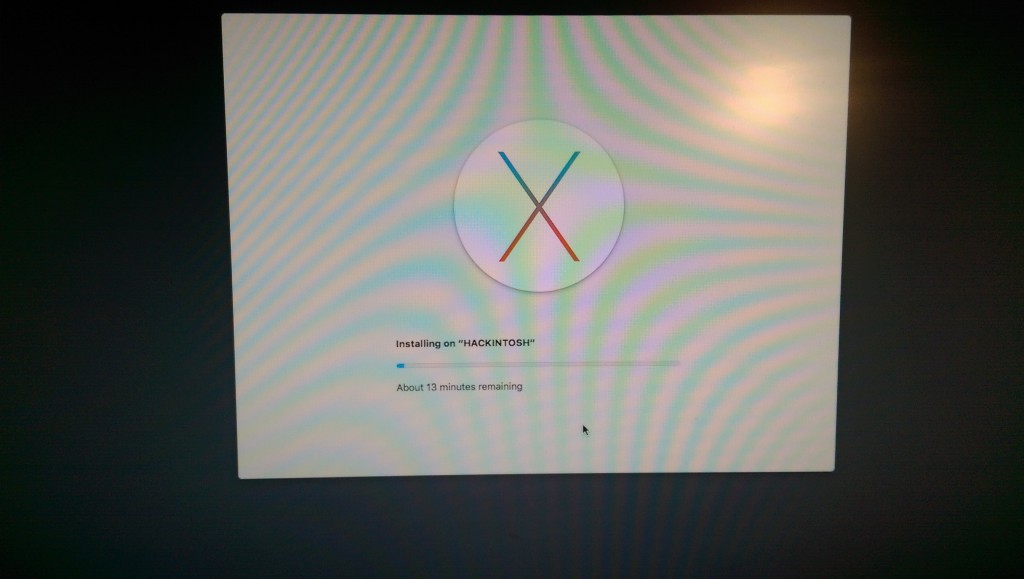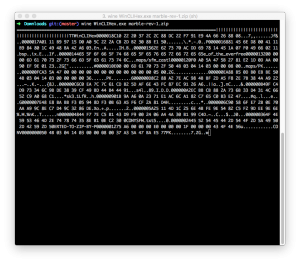My Hackintosh Experiences
In the past I have been known to disapprove of Apple-related products, but I’m not the kind who shoves his opinions down other people’s throat like many do. After being in war with Linux long enough, I decided give the world of Apple a chance. Read why I choose to run OSX instead of Linux or Windows.
Since the dawn of time I was delighted by Apple’s software. I never owned a Mac, they seemed to expensive for me. On the other hand, I never truly erased Apple from my list of choices. A lot of people will tell you prejudiced things, like Apple being evil, and that if you buy a Mac you’re stupid. My view always was that you have to make up your own opinion. However I still think MacBooks and iMacs are beautiful products.
After having quit Windows for a year or so, dual-booting it for the sole purpose of gaming, my next choice as a primary driver, for all things I do, such as programming, some graphics design, and school, was Linux.
While I found that customizing Linux, and all the other fun stuff that comes with it to play around with, was a fun experience, in the end, I considered it to be a waste of time, because I didn’t get productive with it. Besides there are so many distributions to install. I figured most of the time I was updating my system or installing some distribution to try out, whether it was just a virtual machine or on real hardware.

But Linux was fast, efficient, and had everything I wanted (as a developer). What annoyed me the most though was the unbearable incompatibilities there were with my hardware. This put me in a sort of love/hate relationship with Linux. No wonder most people use old ThinkPads (including me), since they have fitting hardware. But they’re slow. I would not use a ThinkPad as my primary system. I’m in need of my 16GB RAM, fast SSDs, and high-end graphics card.
My nerves were broken, after a simple update of Fedora broke my graphics driver, leaving me stuck in the nasty console. Then, after crying, eating a box of ice cream, and watching TV for 3 hours, I reinstalled Linux, and started to really question my choices in life.
After all the struggles I’ve had with Linux I had made a sudden decision: Give OSX a chance. “Why not?”, I asked myself.
I found sympathy when reading Miguel De Icaza’s (founder of the Mono and GNOME project) blog. He wrote about how he switched to Mac, since Linux was a desktop horror. Some people call him a traitor for that.
Installation

Installing OS X on non-Apple hardware at a glance seemed harder than installing Gentoo blindfolded (Though I’m pretty sure someone is capable of this). Luckily, there were enough forums and subreddits to browse for answers. I was also fortunate enough to have compatible hardware, so I didn’t need any special tricks to get the OS to boot.
As it turns out, the installation wasn’t hard at all. The hard part is to assemble all the knowledge on how to do it! Tutorials were fragmented, all saying something else, which put me in confusion. To prepare the installation flash drive, you also need a preexisting OS X environment. Fortunately, I had a OS X virtual machine lying around. Others, who don’t have access to OS X, or don’t have friends with Macs, were already screwed at this point. Furthermore I’m told you can also make a boot flash drive on Windows/Linux.
The Apple-supplied drivers didn’t work with my hardware, so I had to manually install some. In the end the only problem was the audio not working properly. I also have some problems with the sleep mode, but I never use the sleep mode anyways.
The installation in detail is such a complicated process that it’s not worth describing here. Many resources and communities though fortunately exist. In the future, I’ll maybe release an installation-tutorial, at least for my hardware.
The OS
As expected, the desktop experience was super smooth. Even on my 1TB HDD, the OS tricked me into thinking that I was actually on an SSD (at that time I only installed it on my HDD to be safe, I’m running it on a SSD now). A good argument for Apple is that they make their software smooth as butter. I’m always complaining when software is doing something, but not indicating its status. Automatically reopening windows on a reboot is also a big plus.
I found that I wasn’t missing anything from Linux. The stock applications were great (for the most part). Office, Photoshop, things I had missed deeply, suddenly were at my disposal again. Things like Time Machine are really awesome! Wondering why doesn’t Microsoft make backups easy like Apple?
Developing

As packet manager replacement I used brew, a very powerful package manager, which is built on top of Ruby. The standard terminal sucks so I installed iTerm2, which is a dream. It has tons of options and built-in Window splitting. While I still mostly use tmux, I still appreciate the fact that my terminal contains these functionalities out of the box.
At the time I was busy working on PonySFM and had set up my development configuration with Vagrant, which is an awesome tool, that lets you configure virtual machines with simple Ruby scripts, enabling you to debug/develop on any system.
In the end I felt no different developing on OS X than developing on Linux. There were minor differences with the keyboard though. Because I didn’t have a Mac keyboard I had to tweak the keyboard layout a bit.
Complaints
There is some really unintuitive stuff in OSX, that sometimes make you feel like someone is actively playing tricks on you. Finder for example is confusing. Hidden files don’t show up. OSX tries really hard to hide System Folders from you, but I only had to access these because of custom kexts I had to install. Following are some more minor issues.
- The “maximizing” thing makes no sense, it takes too long and disrupts my workflow. In the end I adjusted to it but I still find it hard to get around with it.
- Not significant for me at least (and I guess for most developers too): the gaming experience was not good at all. Weird mouse lag, issues with the desktop, laggy framerate made most of the Source games unplayable (to a certain degree). I only play TF2, so maybe Valve just sucks at porting games. Take that with a grain of salt.
- I think the system hogs much more memory than it should. Last time I checked Chrome was using 6 GB of memory, while I only had around 20 tabs open. Of course, this could also be a problem with OS X refusing to work properly because it’s not on Apple hardware.
Conclusion – Does getting a Mac/Hackintosh make sense for you or not?
If you use Linux/Any other OS, and are happy with it, then you’re good. If not, consider if your problems belong to one of these categories:
- I don’t like the “feeling” of Linux.
- I love Linux for it being a UNIX, but despise it for the confusing and buggy desktop environment.
- I don’t like how some programs look different from others, e.g. GTK2 to GTK3 differences.
- I wanna keep enjoying a good UNIX-based system but without the hassle of setting up.
- I really don’t care about money, just give me something that works.
This post is not intended to sell you to Apple and destroy Torvalds’ dreams, no. It’s meant to act as a guide. Everything is my own experience and I love Linux, still use it everywhere I can’t use OSX on.
But it will take long for the Year of Linux Desktop to arrive.
I still find myself using OSX to this day, and I’ve never had any big issues. The system maintains itself, and everything I need is available.